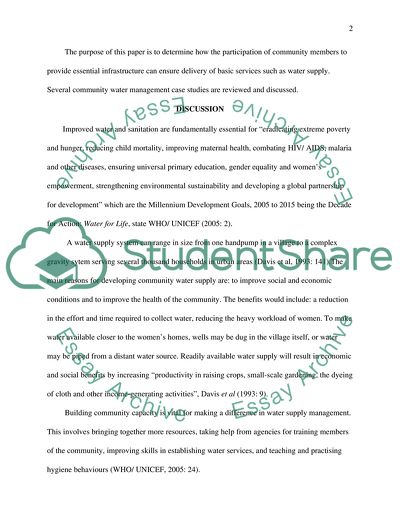Cite this document
(Community Participation and Water Resource Management Case Study, n.d.)
Community Participation and Water Resource Management Case Study. https://studentshare.org/environmental-studies/1708953-can-communities-manage-and-deliver-basic-services-illustrate-your-answer-with-reference-to-case-studies
Community Participation and Water Resource Management Case Study. https://studentshare.org/environmental-studies/1708953-can-communities-manage-and-deliver-basic-services-illustrate-your-answer-with-reference-to-case-studies
(Community Participation and Water Resource Management Case Study)
Community Participation and Water Resource Management Case Study. https://studentshare.org/environmental-studies/1708953-can-communities-manage-and-deliver-basic-services-illustrate-your-answer-with-reference-to-case-studies.
Community Participation and Water Resource Management Case Study. https://studentshare.org/environmental-studies/1708953-can-communities-manage-and-deliver-basic-services-illustrate-your-answer-with-reference-to-case-studies.
“Community Participation and Water Resource Management Case Study”. https://studentshare.org/environmental-studies/1708953-can-communities-manage-and-deliver-basic-services-illustrate-your-answer-with-reference-to-case-studies.


